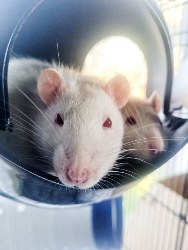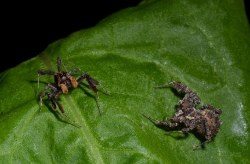Orange Roughy Management Changes
The Chairman of The Orange Roughy Management Company Limited, Mr Tom Birdsall, today acknowledged the Minister of Fisheries’ decisions to revise orange roughy TACCs as proof that the Quota Management System is working to manage New Zealand’s fisheries sustainably:
“The ongoing scientific review of stock sizes has indicated that the catch levels in three of our orange roughy fisheries need to be reduced to conserve these deepwater resources. Quota owners support the need to use the best scientific information available and to manage these fisheries for the future. New Zealand will still maintain the world’s largest managed orange roughy fishery. The business will continue to add $60 million dollars to the New Zealand economy which is a significant component of New Zealand’s annual seafood export earnings of $1,300 million”.
The Orange Roughy Management Company Ltd represents the owners of deepwater quota and works closely with the Government to ensure that New Zealand’s orange roughy fisheries are sustainably managed. Orange roughy have proven to be particularly challenging fisheries to manage as scientists have progressively reviewed their estimations on the productivity of these resources based on increasingly conservative assumptions:
“Assessing the long term yields and the current stock sizes of these fisheries has been difficult, despite an investment of $96 million into research and management by quota owners and the Government over the past 15 years. When we introduced quotas in 1986, we were optimistic that science would develop ways to accurately count these fish, but this has not yet proven to be the case. Meantime, we have to manage on the best and most current information available, based substantially on catch rates from the fishery. Although catch reporting is accurate, because the relationship between catch rates and stock size is unknown, the resulting stock assessment is imprecise and uncertain.
This year’s review of the Challenger fishery, located off the west coast of the North Island, uses a different method to assess the same data used in previous assessments. It estimates that the stock may be well below the maximum sustainable yield level, but these results are highly uncertain. However, quota owners support a further reduction in the quotas here.
Last year, in response to industry concerns with the performance of this fishery, quota owners voluntarily agreed to reduce their catches by one third, to increase the rate of stock rebuild. This year the Minister’s decision to close the fishery goes one step further to maximize this rebuilding rate.
Catches over the past eight years have been within the scientific levels, set in 1992, to manage the stock over the long term. This latest review suggests that these were not conservative enough ”, said Mr Birdsall.
The Company also supported the need for a reduction in quotas for the East Cape fishery, which is assessed to be at the end of the fishing down phase.
Quota owners, concerned with the inadequacies with the scientific surveys, have invested $14.5 million in R&D in addition to that spent by the Government. All of these results have been fully reported to and considered by the Ministry of Fisheries. In a recent acoustic survey of the East Cape grounds, quota owners contracted the same scientists used by the Ministry of Fisheries but they were unable to locate any orange roughy, despite the timing to coincide with spawning:
Mr George Clement, CEO of The Orange Roughy Management Company Ltd noted:
“The difficulties locating and counting orange roughy using standard scientific sampling techniques were highlighted during this survey. It’s like looking for a needle in a haystack as the roughy are very localised in their distribution and are acoustically very difficult to see; almost like stealth fish. A fisherman on board the research vessel directed the scientists to the fish on the last day of the survey but they collected insufficient reliable data for the result to be used in the stock assessment. Several surveys contracted by the Ministry have also proven inadequate for reliable use in stock assessments. We need a new approach where there is close cooperation between the scientists and the fishermen, who ultimately pay for all the research, and who have their investments at risk of poor stock assessment information”.
Orange roughy quota owners, who pay for the full cost of research and management for these fisheries, have funded over $12 million into developing acoustic research techniques to better assess the sizes of orange roughy stocks and are optimistic that these new methods will prove to be more reliable than the current methods.
“It is unfortunate that these quota reductions have come at a time when New Zealand badly needs to increase its overseas earnings and they will have a very negative effect on the local economies of the East Coast and Nelson communities, resulting in fleet reductions, job losses and an annual loss to the economy of $35 million”, said Mr Birdsall.
For further information contact:
Mr Tom
Birdsall
Chairman
The Orange Roughy Management Company
Limited Tel: 09 357 3301
OR
Mr George
Clement
Chief Executive Officer
The Orange Roughy
Management Company Limited Tel: 03 545
7020


 Business Canterbury: Urges Council To Cut Costs, Not Ambition For City
Business Canterbury: Urges Council To Cut Costs, Not Ambition For City Wellington Airport: On Track For Net Zero Emissions By 2028
Wellington Airport: On Track For Net Zero Emissions By 2028 Landcare Research: ANZAC Gall Fly Release Promises Natural Solution To Weed Threat
Landcare Research: ANZAC Gall Fly Release Promises Natural Solution To Weed Threat NZ Anti-Vivisection Society: Auckland Rat Lovers Unite!
NZ Anti-Vivisection Society: Auckland Rat Lovers Unite! University of Canterbury: $1.35 Million Grant To Study Lion-like Jumping Spiders
University of Canterbury: $1.35 Million Grant To Study Lion-like Jumping Spiders Federated Farmers: Government Ends War On Farming
Federated Farmers: Government Ends War On Farming



